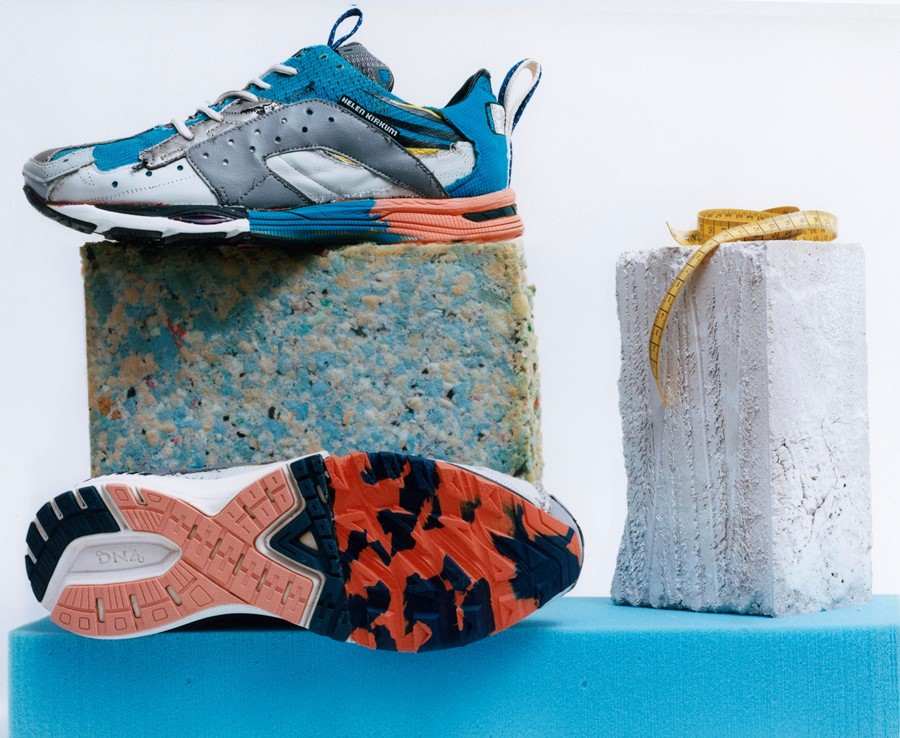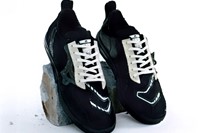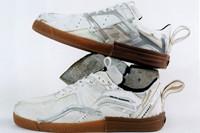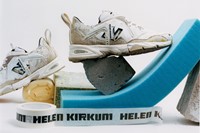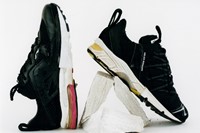Following her debut NEWGEN presentation, Helen Kirkum tells AnOther about her unique design process
- Who is it? Heken Kirkum is a footwear designer who put on her debut NEWGEN presentation at this just-gone London Fashion Week
- Why do I want it? Kirkum gives discarded footwear new life by collaging them together into one-of-a-kind, sculptural shoes
- Where can I find it? Online at helenkirkum.com
Who is it? Helen Kirkum decided footwear was the outlet for her creativity when she saw a pair of bronze, pointy brogues on the University of Northampton stand at Graduate Fashion Week. “They were just so beautiful and I thought that sums up everything I want to do in one perfectly formed object,” says the London-based designer. She left Hampshire and headed to the former shoe-making capital to undertake an undergraduate degree in footwear design, working at heritage brand Grenson during her time in the town. But it wasn’t until her MA at the Royal College of Art in 2015 that Kirkum began to focus on trainers.
“I didn’t know how to make them. I started asking my boyfriend and friends if I could cut up their old sneakers and nobody would give me them,” she says. “I realised that there’s something about sneakers specifically that people are attached to. Even when they’re old and battered and falling apart, they have memories embedded within them that people don’t want to give up.” In order to find a steady source of trainers to deconstruct, Kirkum turned to Traid, a recycling warehouse in Wembley. Seeing the mass of shoes – particularly single shoes as pairs easily become separated when donated – Kirkum felt she had to make use of them. “From that point forward, it just didn’t make sense for me to make things out of new materials when there was so much surplus just waiting to be used,” she says.
The practice of breaking down old shoes and crafting them into something new became the basis of Kirkum’s MA and, after graduating, the focus of her eponymous brand. Her aesthetic quickly garnered attention, her creations featured in exhibitions in The Netherlands, Hong Kong, New York, London, and Milan. Her work sits firmly on the precipice of art and fashion, so while sculptural and perfectly suited to sitting upon a plinth, it’s also highly wearable. This dynamic helped Kirkum score collaborations with designers including Casely Hayford, Bethany Williams, and Matthew Needham, as well as trainer industry giants Adidas and Reebok.
Kirkum describes her design process as “design through making”, a technique she honed during her year working at Adidas post-graduating. “I worked there for a year, and everybody was so amazing at drawing, they could do these incredible renders, and I just felt like I wanted to hide in a corner”, she explains. “Drawing isn’t my strongest skill. For me the design process comes through making prototypes, sticking things together and seeing how it turns out. So when I found my feet with that I felt a lot more comfortable showing my work and communicating my designs.”
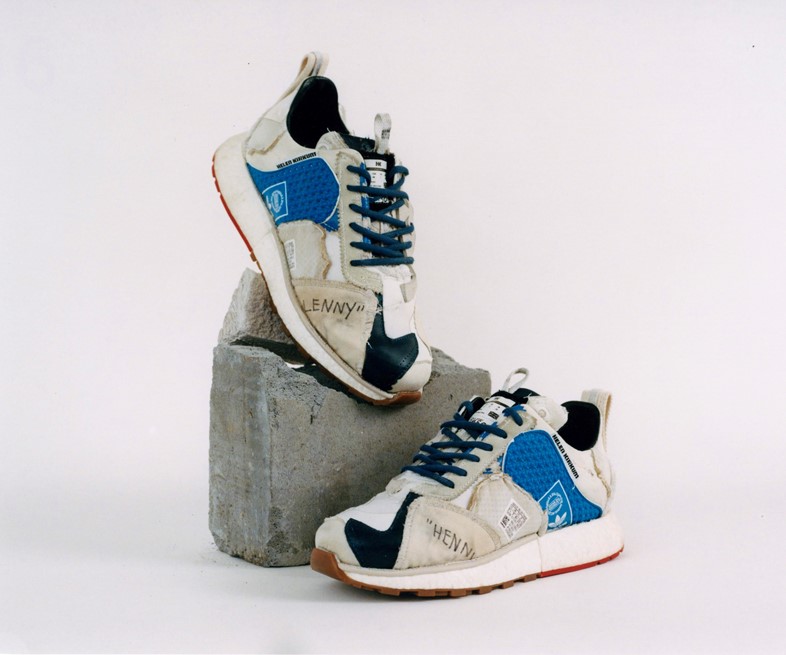
Why Do I Want It? The spontaneity of Kirkum’s design process is evident in her trainers, with each pair being entirely unique. Scraps of leather, suede and mesh tessellate, while logos and branding take on a new context when inverted, collaged, and semi-concealed. While Kirkum is upfront that responsible manufacturing isn’t the easy option, she flourishes within the limitations that her sourcing methods naturally set. “When I’ve got all these little shapes and intricate pieces you can start to collage them together and build a puzzle. And because everything I do is with found materials it’s spontaneous. When you have two pieces that perfectly fit together it’s just the most satisfying thing ever,” she says.
The use of waste materials would lead many to describe Helen Kirkum as a sustainable brand, but the designer takes care not to use “sustainable” within her brand lexicon. “Everybody’s sticking the word ‘sustainability’ on everything at the moment, but I like people to make up their own mind about what I do,” she says. However, as a small business with hand-making and the use of waste materials at its core, the nature of Kirkum’s design and manufacturing process almost dictates responsible, sustainable growth.
Her made-to-order designs are split into two categories: ‘Voyage,’ made from Traid-sourced materials, and ‘Legacy,’ crafted from two to six pairs of the client’s own worn trainers. The latter are developed via consultation and an inherent level of trust between client and designer, and Kirkum expects to spend around a week to ten days crafting each made-to-order pair.
To maximise the use of waste resources, Kirkum has identified areas to streamline the process of production, but her future isn’t predicated on expediting manufacturing and trying to compete with mass producers. Rather she wants to balance the product-side of her brand with education. “I’m always trying to encourage people, encourage students and encourage creativity within the world because I just think it’s so important,” she says. She hopes to expand her sneaker sculpture workshops, where she guides people through making ‘sneakers’ out of everything from cereal packets to bubble wrap, one day teaching people to make their own, wearable shoes.
“I kind of see both sides of the business growing simultaneously and then one day I’ll have a massive studio where we can do workshops and events and gigs and everything else in between,” she says. “That would be the dream.”

Where can I find it? Online at helenkirkum.com.
